MODICA
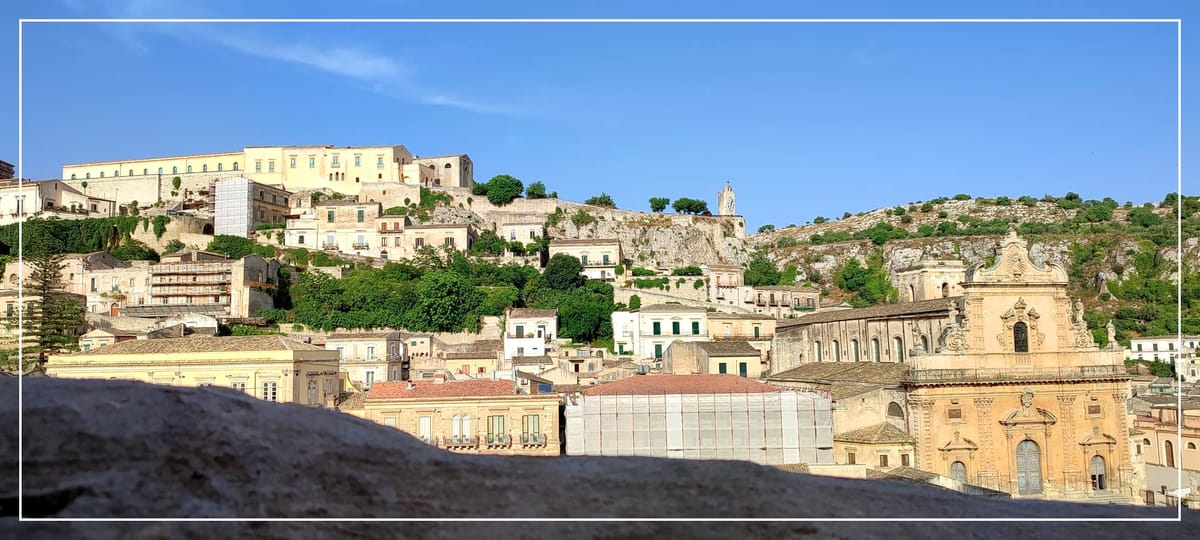
"The city of chocolate"
Modica, often called "the city of chocolate," seamlessly blends gastronomy and Baroque splendor. Divided into Modica Alta (Upper Modica) and Modica Bassa (Lower Modica), the town enchants visitors with its dramatic hillside architecture, rich history, and world-famous chocolate-making tradition.
What sets Modica’s chocolate apart is its ancient Aztec-inspired technique, brought to Sicily by Spanish conquerors in the 16th century. Unlike conventional chocolate, Modica’s version undergoes a cold-processing method, ensuring that sugar crystals remain intact, creating a uniquely grainy texture that bursts with flavor. This artisanal process remains a closely guarded secret, adding an air of mystery to every bite.
A Taste of Tradition
One of the most renowned chocolatiers in Modica is Antica Dolceria Bonajuto, a family-run establishment mastering this craft for over six generations. Their chocolate is made by blending cocoa paste with sugar and natural flavors—without added fats or milk—preserving an authentic taste that echoes its Mesoamerican roots.
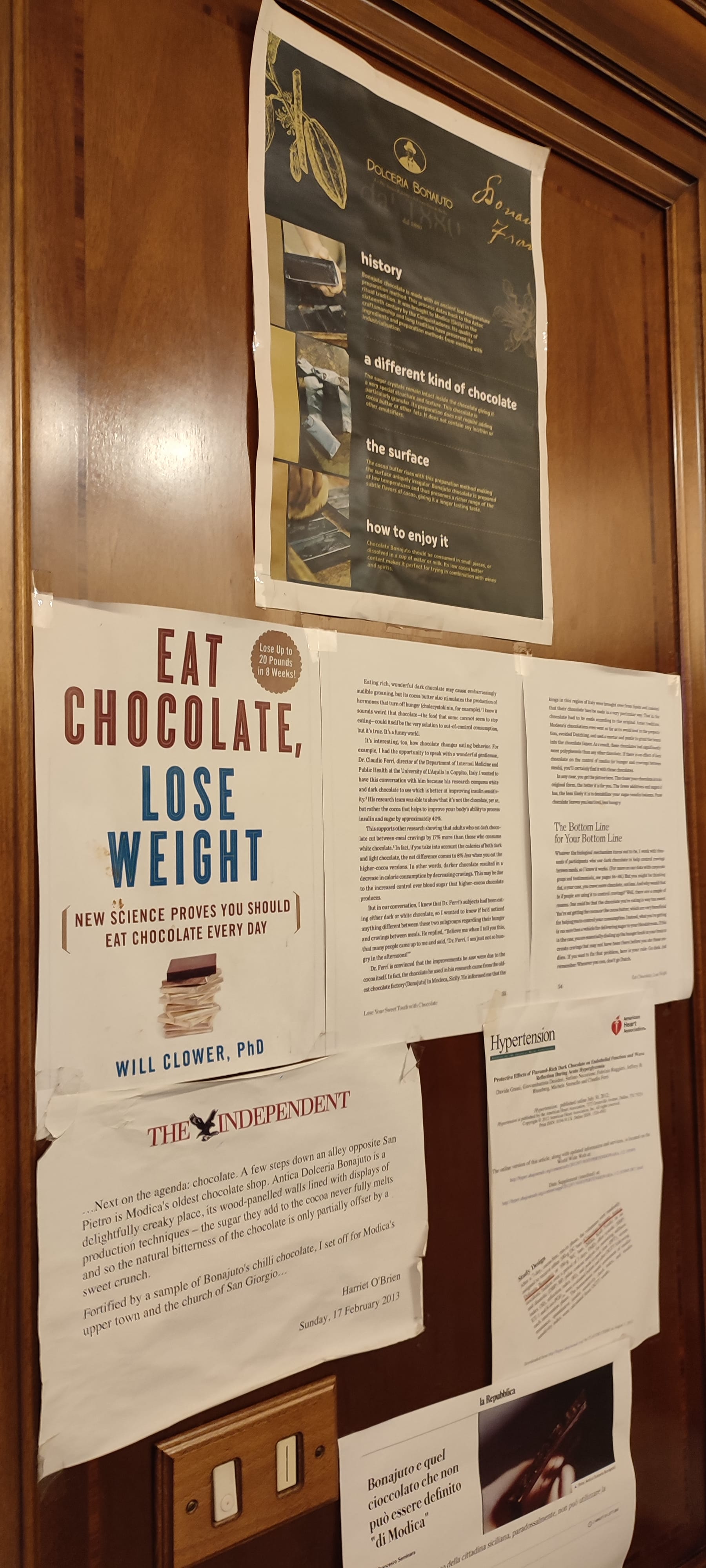
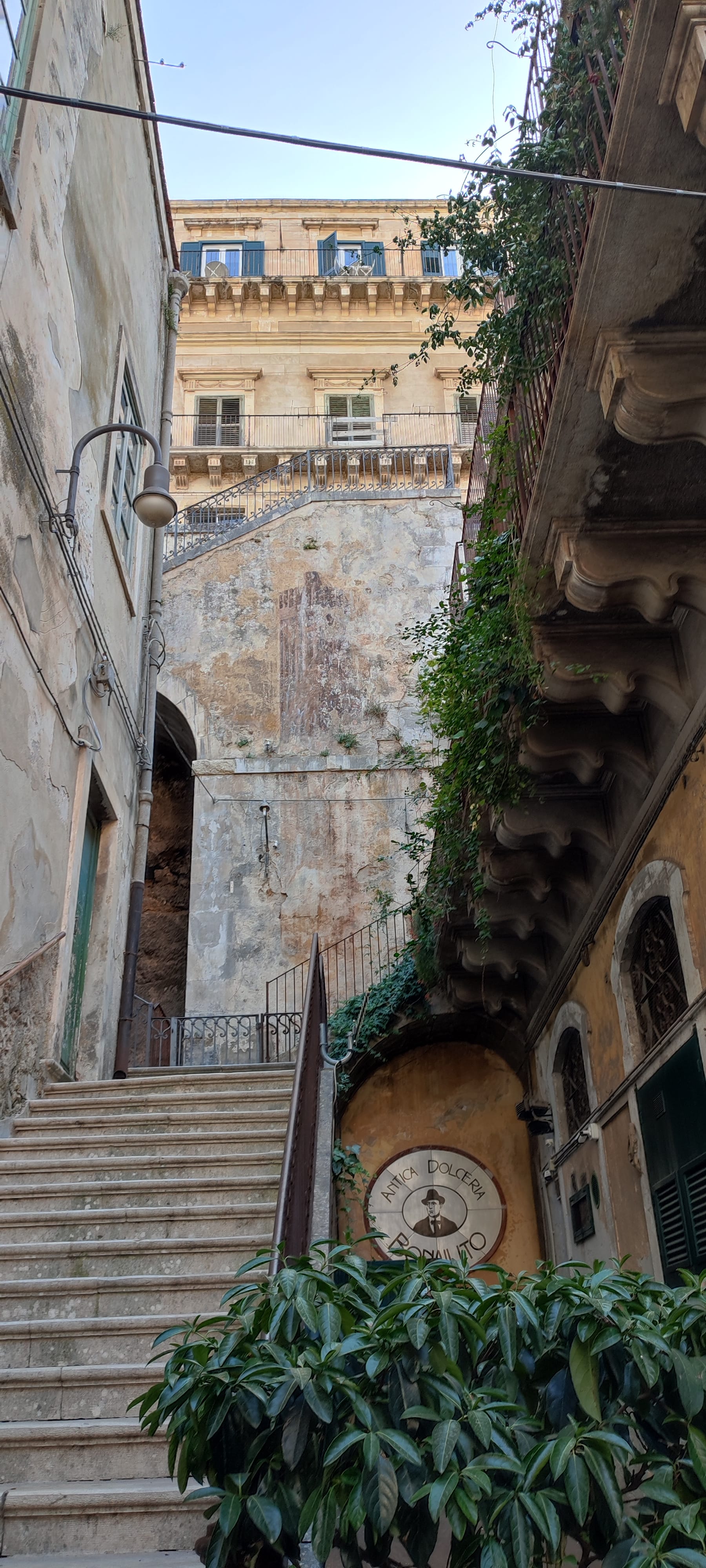

Antica Dolceria Bonajuto
For a truly unique experience, try the “Jasmine Chocolate”—a rare delicacy inspired by a 17th-century Medici recipe. Freshly cut jasmine buds are placed on the cocoa for ten days, allowing their delicate fragrance to infuse the chocolate, resulting in an unparalleled floral aroma.
Unexpected Chocolate Delights
Beyond bars of chocolate, Modica’s rich culinary traditions extend to mpanatigghi, a fascinating pastry that reflects Italy’s historical approach to chocolate as a sustaining food rather than a sweet treat. This crescent-shaped cookie is filled with a surprising yet harmonious blend of chocolate, almonds, spices, and minced beef, originally designed to provide nourishment for travelers and soldiers.
A visit to Modica is more than just a culinary journey—it’s an immersion into centuries of history, artistry, and flavor, where every bite tells a story.
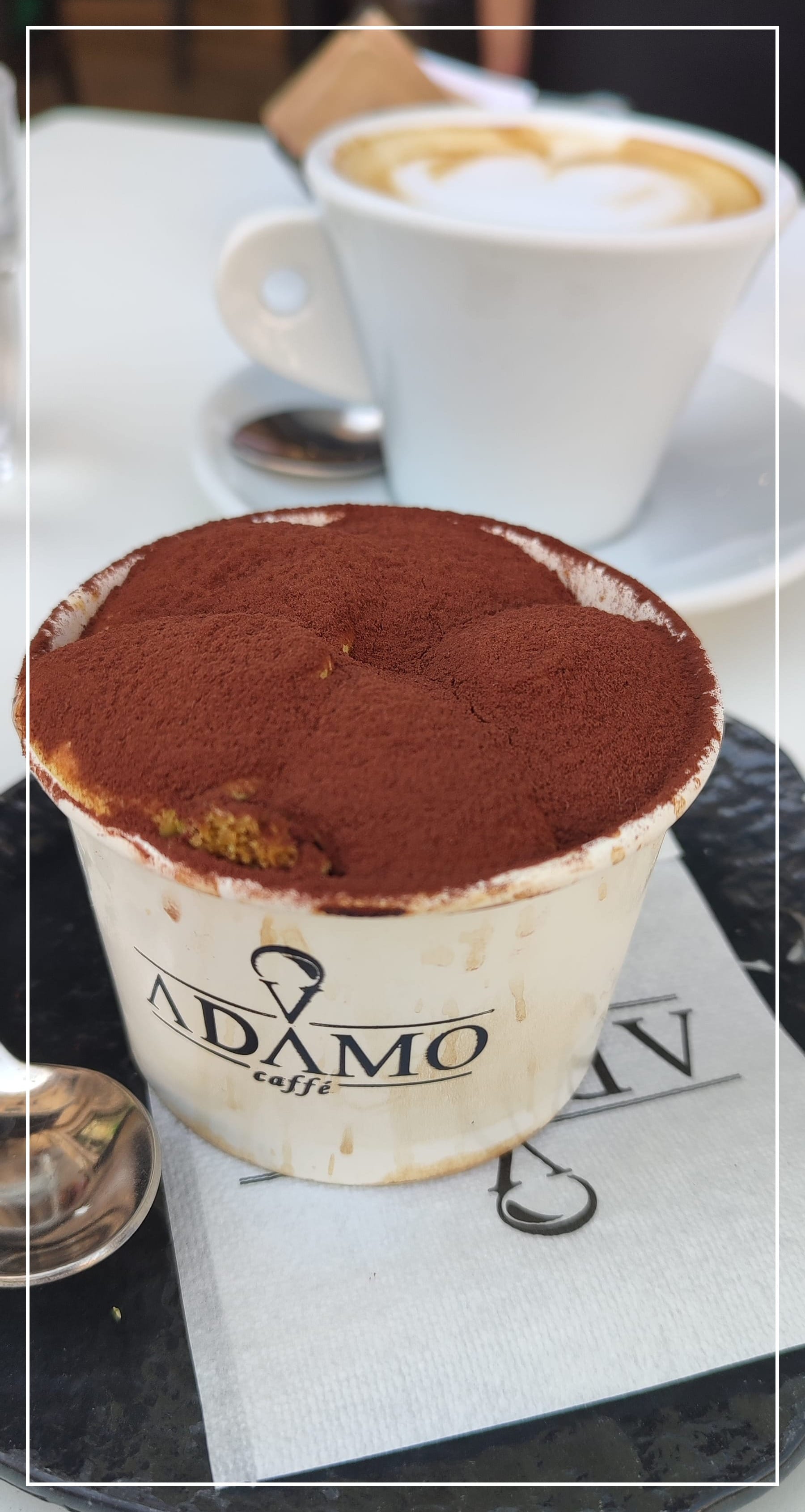
In contrast to this poetic ritual, there is a more "practical" recipe that also ties into Italy’s chocolate history—the mpanatigghi, a type of cookie filled with chocolate and minced beef, reflecting a time when chocolate was not considered a sweet treat but a food staple.
San Giorgio Cathedral, Modica: A Masterpiece of Sicilian Baroque
San Giorgio Cathedral in Modica stands as one of the most majestic examples of Sicilian Baroque architecture and is an iconic landmark of the city. With its imposing façade and monumental staircase, it serves as both a religious and cultural reference point for the entire region. Recognized as a UNESCO World Heritage Site, this cathedral is among the marvels of the Val di Noto, captivating visitors from around the world.
The Duomo di San Giorgio is more than just a place of worship; it is a symbol of Modica’s resilience, faith, and artistic excellence. Whether you come for its spiritual significance, architectural splendor, or panoramic views, the cathedral offers an unforgettable journey through history, devotion, and artistic mastery—a true crown jewel of Sicily.
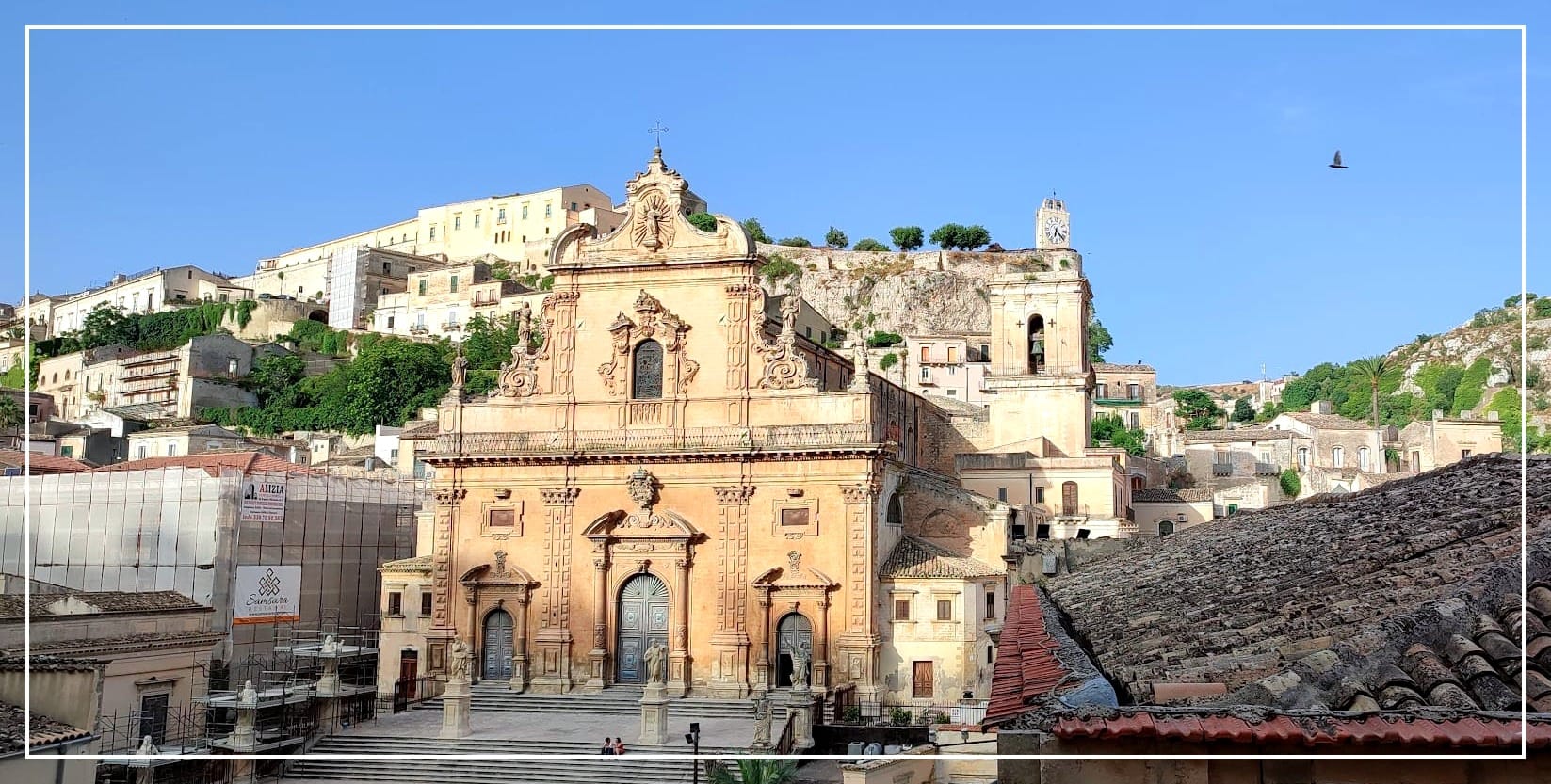
History of the Cathedral
The origins of San Giorgio Cathedral date back to the 12th century, with the first recorded mention appearing in a papal bull from 1150. However, the current structure is the result of several reconstructions, due to a series of devastating earthquakes that have struck southeastern Sicily over the centuries.
The first major earthquake necessitating rebuilding occurred in 1542, followed by another in 1613. But it was the catastrophic 1693 earthquake that caused the most destruction, virtually leveling much of the Val di Noto, including Modica. Despite the devastation, reconstruction of the cathedral began promptly. By 1696, during the pastoral visit of the Bishop of Syracuse, the church was once again functional for religious services.
The façade took over 140 years to complete from its first restoration effort in 1702 to its final touches in 1842!
The definitive reconstruction began in the 18th century, resulting in the magnificent Baroque structure we see today. The façade is attributed to Rosario Gagliardi, a master of Sicilian Baroque. Restoration of the first tier of the 17th-century façade—which had survived the 1693 quake—began in 1702 and was completed by 1738. Later, in 1842, the iron cross was added to the spire, giving the cathedral its final monumental appearance.
Exterior Architecture
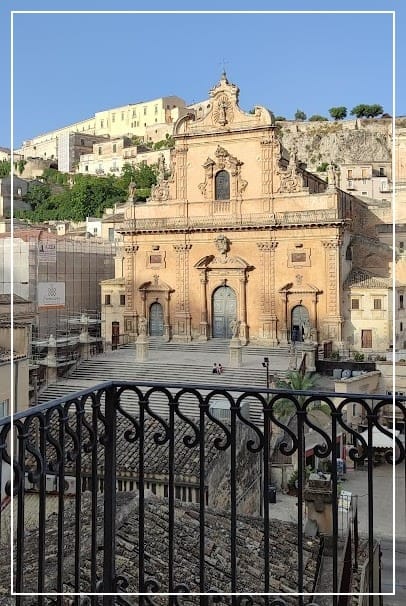
One of the most distinctive features of the cathedral is its towering façade, rising to a height of 62 meters. Construction began in 1702 and culminated in 1842 with the placement of the iron cross. The multi-tiered façade is richly adorned with columns, statues, and intricate Baroque details, giving it a dramatic and solemn appearance. It shares stylistic parallels with the Katholische Hofkirche in Dresden, highlighting shared influences within the European Baroque tradition.
Access to the cathedral is granted via a monumental staircase of 164 steps. The upper section was designed by Jesuit architect Francesco Di Marco in 1814 and completed in 1818. The lower section, linking the cathedral to Corso San Giorgio, was conceived by Alessandro Cappellani Judica in 1874 and completed in 1880. The staircase is flanked by terraced gardens, known as the Orto del Piombo, enhancing the structure’s grandeur and evoking comparisons to the Spanish Steps in Rome.
Interior Structure
The cathedral’s interior is organized into five naves, supported by 22 Corinthian columns, creating a vast and majestic space. Light filters through large windows, producing a luminous atmosphere that accentuates the frescoes and ornate decorations.
Beyond the transept lie three apses, each housing elaborate altars and significant artworks. The ceiling is adorned with biblical frescoes, while side walls feature a blend of paintings, gilded stucco, and sculptural details. Notable among the treasures is the marble statue of the Madonna della Neve, crafted in 1511 by Giuliano Mancino and Bartolomeo Berrettaro.
In the right nave, the second altar holds the Assumption, a painting completed in 1610 by Filippo Paladini. The cathedral also preserves one of its most valued masterpieces: the polyptych of the main altar, composed of ten panels depicting scenes from the life of Christ and various saints. Once attributed to Girolamo Alibrandi, recent scholarship credits Bernardino Nigro as the true artist, dating the work to 1573.
One of the cathedral’s most unusual treasures is its floor-mounted sundial, installed in 1895 by mathematician Armando Perini. Crafted with marble inlays, this elegant and functional piece is a rare example of an astronomical instrument inside a Sicilian church, and a fascinating nod to the intersection of faith and science.
Also not to be missed is the silver monstrance, a remarkable work attributed to Filippo Juvarra, the famed 18th-century architect and goldsmith. This exquisite object combines spiritual symbolism with masterful metalwork, reflecting the cathedral’s long-standing role as a guardian of sacred art.
An Architectural Marvel
The façade of San Giorgio Cathedral rises 62 meters, towering over Modica with majestic presence. The multi-tiered design, rich with columns, statues, and sculptural detail, echoes European Baroque influences, drawing comparisons to the Katholische Hofkirche in Dresden.
A 164-step monumental staircase leads up to the cathedral, blending spiritual ascent with architectural grandeur. The upper segment, designed by Jesuit architect Francesco Di Marco in 1814, was completed by 1818, while the lower portion—linking to Corso San Giorgio—was finished in 1880 by Alessandro Cappellani Judica. The staircase, flanked by terraced gardens known as the Orto del Piombo, evokes the elegance of Rome’s Spanish Steps.
Inside the Cathedral: Grandeur and Devotion
Sacred Relics and Masterpieces
Among the cathedral’s many treasures is a chapel housing a revered statue of St. George on horseback, which plays a central role in Modica’s annual festival in April. During this celebration, the statue is carried through the streets in a spectacular religious procession. Additionally, the saint’s relics are safeguarded in the Santa Arca (Holy Ark), a venerated artifact within the cathedral.
The cathedral also holds artistic gems, including the 17th-century painting "Martirio di Sant'Ippolito" by Cicalesius, which depicts the martyrdom of Sant'Ippolito, to whom the church was also dedicated. Another remarkable piece is a 16th-century marble statue of Madonna della Neve (Our Lady of the Snow), attributed to Giuliano Mancino and Bartolomeo Berrettaro.
Its sundial still functions and can be used to tell solar noon with surprising accuracy!
Step inside, and you're greeted by a five-nave layout supported by 22 Corinthian columns, bathing in natural light from tall windows. The cathedral’s interior features stunning biblical frescoes, richly decorated altars, and an atmosphere of reverence and artistry.
Among the artistic highlights:
- A marble statue of the Madonna della Neve (1511), sculpted by Giuliano Mancino and Bartolomeo Berrettaro.
- The Assumption by Filippo Paladini (1610), located at the second altar in the right nave.
- The main altar polyptych, once attributed to Girolamo Alibrandi, now credited to Bernardino Nigro (1573), depicting vivid scenes from the life of Christ and the saints.
Unique Features Worth Seeing
📏 The Sundial
Installed in 1895 by mathematician Armando Perini, the floor-mounted sundial is crafted from marble inlays and functions as a working astronomical instrument—a rare sight in any church, especially in Sicily.
🕊️ The Silver Monstrance
Attributed to Filippo Juvarra, this 18th-century silver monstrance showcases the fusion of architectural skill and goldsmithing brilliance, embodying the grandeur of Baroque ecclesiastical art.
Plan Your Visit
San Giorgio Cathedral isn't just a monument—it's an experience. Whether you're drawn by its historical significance, architectural beauty, or quiet spiritual atmosphere, a visit here is a journey through the soul of Sicilian heritage.
📍 Location: Modica, Sicily
🎟 Entry: Free (donations welcome)
🕒 Opening Hours: Vary by season and religious service
Museo del Cioccolato di Modica
"A Sweet Journey Through History"
Nestled in the heart of Modica Bassa, the Museo del Cioccolato di Modica is a delightful tribute to the city's renowned chocolate-making tradition. This charming museum offers visitors a fascinating glimpse into the origins, evolution, and craftsmanship behind Modica’s unique chocolate, which dates back to the ancient Aztecs and was later introduced to Sicily by Spanish explorers.
What to Expect
- History & Traditions: Discover the centuries-old cold-processing method that sets Modica’s chocolate apart, preserving the granular texture and bold flavors that make it so distinctive.
- Artifacts & Exhibits: Explore historic tools, molds, and packaging used in traditional chocolate-making, as well as informative displays detailing the artisanal process.
- Chocolate Map of Italy: One of the museum’s highlights is an impressive chocolate sculpture—a detailed map of Italy crafted entirely from Modica chocolate.
- Tasting Experience: Indulge in chocolate samples, available in a variety of unique flavors, from cinnamon and vanilla to chili and citrus zest.
Visitor Information
📍 Address: Corso Umberto I, 149, Modica Bassa
🕰️ Opening Hours: Tuesday – Saturday: 10:00 AM – 2:00 PM & 4:00 PM – 8:00 PM Sunday: 10:00 AM – 1:00 PM
🎟️ Entrance Fee: €2.50 (Free for children under 7)
Cava d’Ispica
"A Timeless Archaeological Wonderland"
Stretching 13 kilometers between Modica and Ispica, Cava d’Ispica is one of Sicily’s most fascinating archaeological sites. This breathtaking canyon, carved over millennia by natural forces, has been a refuge and settlement for prehistoric, Greek, Byzantine, and medieval civilizations. Today, it offers visitors a remarkable journey through time, with its rock-cut tombs, ancient catacombs, and hidden cave churches nestled within dramatic limestone cliffs.
Highlights of Cava d'Ispica
Grotte Cadute (Collapsed Caves) – A mesmerizing geological wonder formed by ancient rock collapses, revealing layers of history.
Byzantine Rock Churches – Visit the remarkable Santa Maria, San Nicola, and Spezieria churches, adorned with faded yet evocative frescoes, offering a glimpse into early Christian worship.
Rock-Cut Necropolis – A vast burial complex dating back to the Byzantine era, showcasing intricate chamber tombs carved into the rock face.
Ancient Greek Gymnasium & Prehistoric Tombs – Evidence of Hellenistic civilization and Neolithic burial sites, revealing Cava d’Ispica’s role as a crossroads of cultures.
🕰️ Opening Hours: 9:00 AM – 5:00 PM (Closed on Sundays & public holidays)
🎟️ Entrance Fee: €4
Museo Civico
"Unlocking Modica’s Past"
Nestled in the heart of Modica Bassa, the Museo Civico is a hidden gem that preserves the city’s rich archaeological and artistic heritage. With artifacts spanning from the Neolithic period to modern times, the museum offers a deeper understanding of Modica’s storied past and cultural legacy.
Must-See Exhibits
L’Eracle di Modica – The museum’s most prized artifact, this exquisite Hellenistic bronze statue portrays Hercules wearing the legendary Nemean lion’s skin, a symbol of his strength and heroic feats.
Salvatore Quasimodo Collection – A tribute to Nobel Prize-winning poet Salvatore Quasimodo, a Modica native born in 1901. This collection includes 20th-century paintings, sketches, and personal items that shed light on his artistic journey.
🕰️ Opening Hours: Tuesday – Saturday: 9:00 AM – 1:00 PM & 3:00 PM – 7:00 PM & Sunday: 9:00 AM – 1:00 PM
🎟️ Entrance Fee: €2.50
Mulino ad Acqua
"A Living Relic of Sicilian Tradition"
Tucked away in the stunning Cava d’Ispica, the Mulino ad Acqua (Museo Cavallo d'Ispica) offers a rare glimpse into Sicily’s rural heritage. This centuries-old water mill, still in working condition, showcases the ingenious mechanics behind traditional grain milling, an essential part of Sicilian life for generations.
What to Discover
Historic Water Mill in Action – Watch the original wooden gears and millstones as they are powered by an underground spring, keeping centuries-old traditions alive.
Miller’s House & Traditional Tools – Step inside the well-preserved living quarters of the miller, complete with authentic furniture and everyday objects from a bygone era.
Breathtaking Natural Setting – Surrounded by the rugged beauty of Cava d’Ispica, this peaceful location offers a perfect escape into nature and history.
📍 Location: Via Cava Ispica, 89, Modica, Sicily, Italy
🕰️ Opening Hours: 9:00 AM – 5:00 PM (Closed Sundays & public holidays)
🎟️ Admission: €4
Camarina Archaeological Park & Regional Museum
"A Window into Ancient Sicily"
Founded in 598 BC by Doric Greeks from Syracuse, Camarina was a prosperous Greek colony along the Ippari River, strategically positioned for maritime trade. Today, its archaeological park and regional museum provide an unparalleled glimpse into ancient Greek civilization, trade, and religious practices in Sicily.
Key Attractions
Archaic Trade Amphorae – A collection of large ceramic vessels once used to transport olive oil, wine, and grain across the Mediterranean.
Prehistoric Animal Remains – Fossils revealing insights into the region’s ancient ecosystems and early human interactions with wildlife.
Greek Agora Reconstruction – A faithful recreation of a 5th-century BC marketplace, where visitors can imagine the bustling commercial life of Camarina.
Ruins of the Temple of Athena – The remnants of a grand sanctuary dedicated to the goddess of wisdom and warfare, reflecting Camarina’s religious and cultural significance.